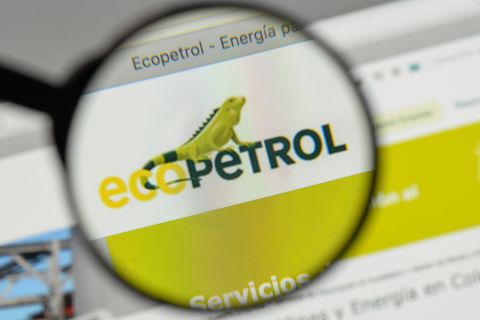Producers' return on capital employed, which has averaged anywhere from 2% to 10%, had better be around 25%, for those seeking private equity capital from Los Angeles-based Kayne Anderson Energy Fund LP. "We are literally off the charts," said Bob Sinnott, senior investment officer at Kayne Anderson, looking at a graph charting producers' rates of return from 1993 to 2003. "I'd much rather talk rates-of-return than look at seismic data." There are other areas of E&P to examine, according to Sinnott. First, the producer must have a niche. "I want a company to do what it does well," he said. Far-flung prospects without much focus aren't a big selling point. An established track record of finding costs, operating costs and acquisitions is important, and an inventory of opportunities is vital. "If your company has done incredible things in the last five years, but doesn't know what's ahead, we'd be less interested." Also, the company must have some kind of productive plans for the fund's money. "We love financing acquisitions because we can see what our capital is doing," he said. Development of existing properties is another desirable use of capital, and exploration financing is available-if management has a contingency plan in case the prospect isn't successful. On the other hand, there are lots of opportunities for Kayne Anderson to buy the high-yield debt of distressed companies and restructure their balance sheets. However, Sinnott shies away from financings that are intended solely for this purpose; companies must have additional capital to increase their value. "We want to structure deals with a little extra breathing room," he said. In the last 12 months, Kayne Anderson has looked at more than 75 deals. The fund has closed five, placing about half of the $108-million fund, and nine are still under consideration. Of the more than 61 transactions that didn't happen, Sinnott said that 15% failed because of management issues, 8% fell through because the company in question was sold or merged, 8% were closed elsewhere, and 69% fell victim to differences in valuation structures and risk-return issues. Overall, however, Kayne Anderson is optimistic about the energy sector for a couple of reasons. Prices should continue to average above historical norms, companies are focusing on rates of return and reducing cost, service costs are not increasing as quickly as in past up-cycles, banks are still conservative and public money is tough to get. -Jodi Wetuski
Recommended Reading
CERAWeek: Exxon Mobil CEO Says Not Trying to Acquire Hess
2024-03-18 - CEO Darren Woods said Exxon Mobil is trying to secure preemption rights over Hess Corp.'s Guyana assets in its dispute with Chevron, not buy the company itself.
California Resources Corp., Aera Energy to Combine in $2.1B Merger
2024-02-07 - The announced combination between California Resources and Aera Energy comes one year after Exxon and Shell closed the sale of Aera to a German asset manager for $4 billion.
Ecopetrol, Occidental Permian JV Generating Positive Results
2024-03-07 - Ecopetrol SA's joint venture with Occidental Petroleum in the Permian continues to generate outstanding operational and financial results for the Colombian state-owned energy giant.
Making Bank: Top 10 Oil and Gas Dealmakers in North America
2024-02-29 - MergerLinks ranks the key dealmakers behind the U.S. biggest M&A transactions of 2023.
EnQuest Selling Stake in North Sea Golden Eagle Oilfield, Sources Say
2024-04-16 - EnQuest has struggled in recent years with high debt levels and a drop in profits after Britain imposed a 35% windfall tax on North Sea producers.



